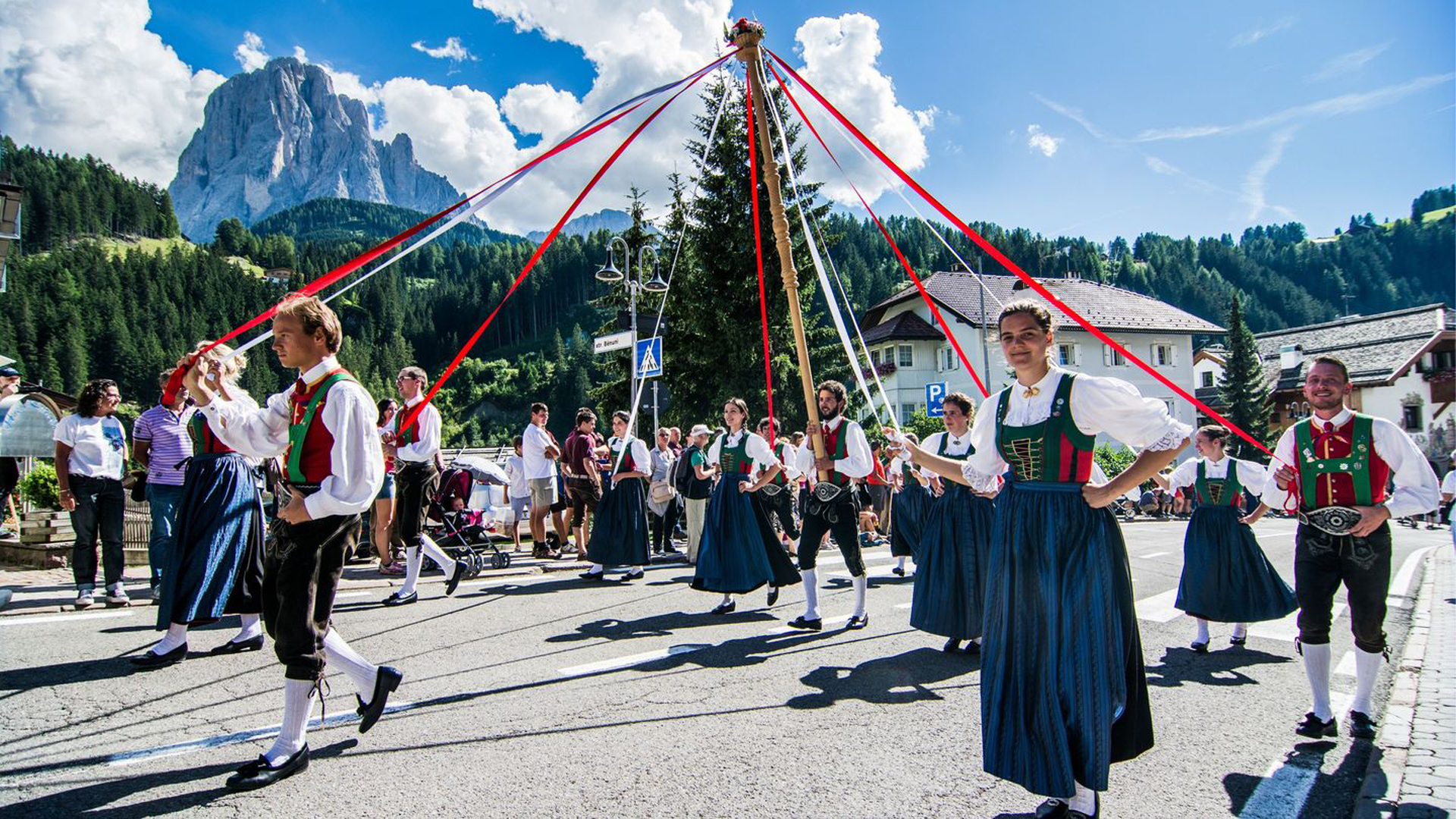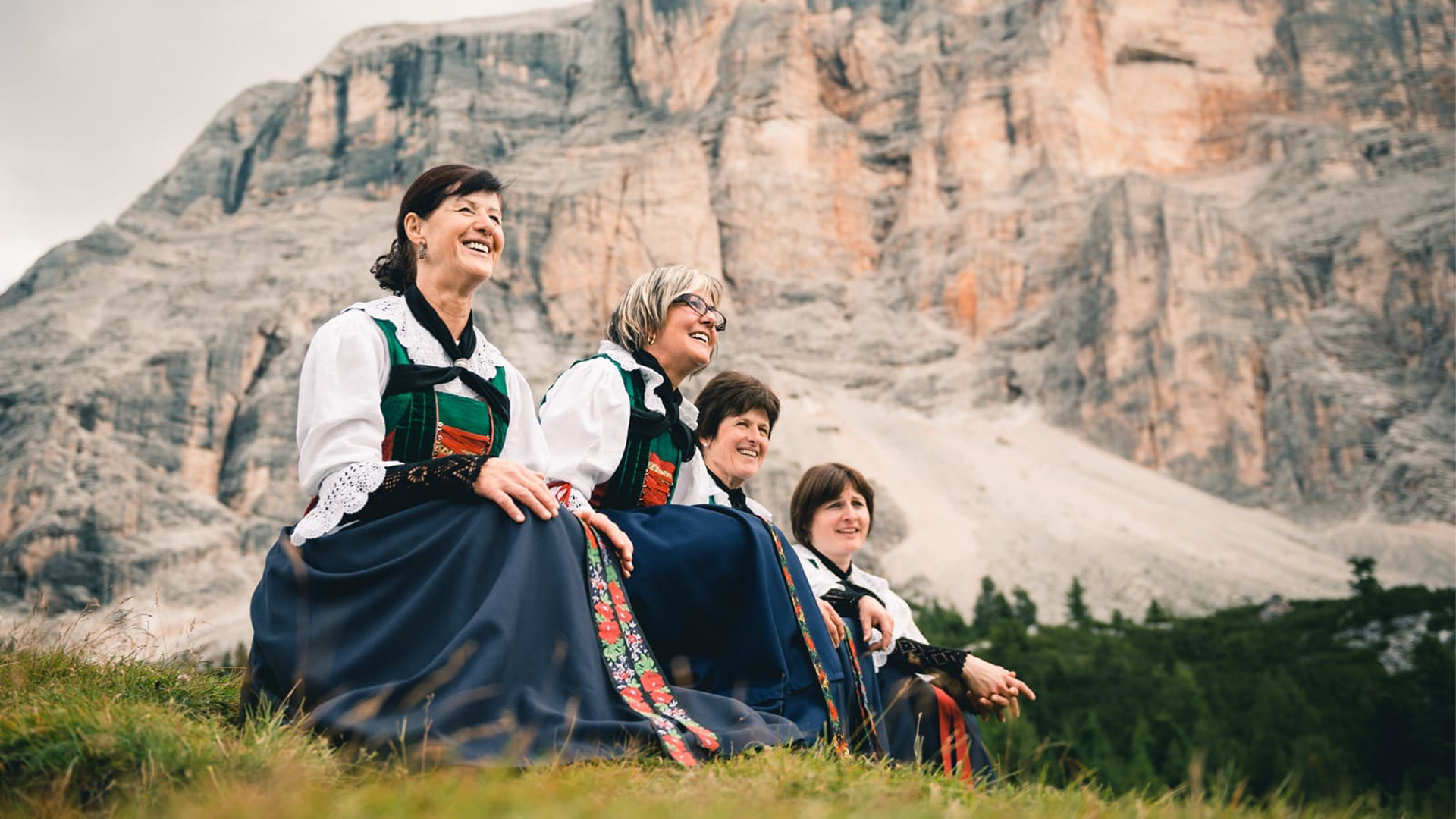In the centuries following the integration of the Alps into the ancient Roman Empire, the Rhaetian people who inhabited the Dolomites gradually adopted the colloquial Latin spoken by the Roman magistrates and soldiers stationed at northern outposts. This vulgar Latin, alongside a mixture of Germanic expressions, eventually resulted in a language that is still spoken in the area today: Ladin.
The Ladin language should not be confused with Ladino, the Spanish-adjacent language spoken by the descendants of the Jews who were exiled from Spain and Portugal at the end of the 15th century. Today, Ladin is spoken in the Dolomites mountainous region by a roughly 30,000-strong community spread across five valleys and three provinces: the Val Badia and Val Gardena valleys in South Tyrol, Livinallongo and Ampezzo in Belluno, and the Val di Fassa valley in Trento.

Due to the historic isolation of its speakers, who lived in isolated mountainous regions, the Ladin language has managed to survive and flourish for nearly two millennia despite the pressures of surrounding languages. It is now one of the three official languages spoken in South Tyrol alongside Italian and German. These are examples of how the Ladin language differs from Italian, both of which descend from Latin.
ITALIAN
LADIN

Up until 1918, the Ladins were subjects of the Austrian Hungarian empire and its emperors. After World War I, all of South Tyrol was transferred to Italy. Under Benito Mussolini’s dictatorship, spanning between the 1920s and 1940s, the Ladins were denied recognition as an ethnic and linguistic minority. Today, this language is taught in schools alongside German and Italian, and Italian state television and radio networks in the area frequently broadcast Ladin programs.
Asia London Palomba
Asia London Palomba is a trilingual freelance journalist from Rome, Italy. In the past, her work on culture, travel, and history has been published in The Boston Globe, Atlas Obscura, The Christian Science Monitor, and Grub Street, New York Magazine's food section. In her free time, Asia enjoys traveling home to Italy to spend time with family and friends, drinking Hugo Spritzes, and making her nonna's homemade cavatelli.


